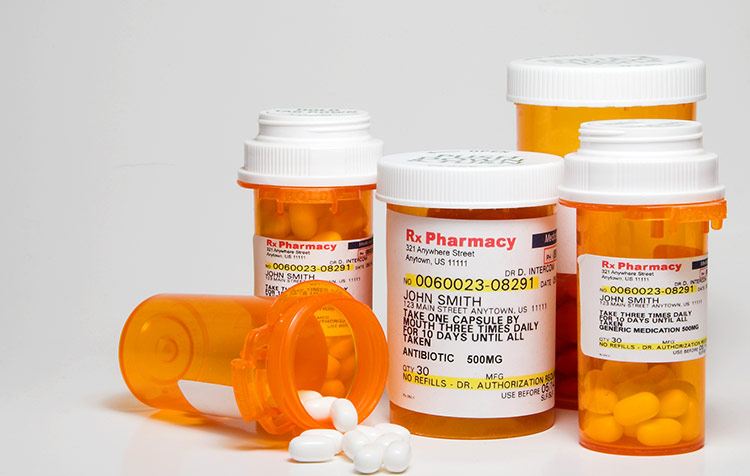Accidental deaths have been on the rise in recent years, according to data from the Centers for Disease Control and Prevention. Unfortunately, many of these accidental deaths happen in the home — especially to children and the elderly. Leading causes of these fatalities include poisoning; falls; suffocation; drowning; and fire — all of which you’re at increased risk for if you haven’t taken home safety seriously.
The good news is, improving safety at home isn’t complicated. Once you know the most common causes of accidental injury and accidental death, it’s easy to make a few changes and improvements to reduce the hazards you face and ensure you and your loved ones are safe. Here are the top safety hazards to watch for in your home and steps you can take to prevent them from causing harm to you and your family.
Falls
According to the National Council on Aging, falls are the leading cause of both fatal and non-fatal injuries for elderly Americans. As many as one in four adults aged 65 and over falls annually, and older adults are treated in the ER every 11 seconds as a result of a fall. Falls are also common among young children, and falls result in more than 2.8 million ER visits every year in the United States.
To make sure your home is free from fall hazards:
- Use safety gates on stairs with small children. Consider a baby gate such as the Regalo Easy Walk Step Through Gate, which adults can open and close easily even when holding an infant.
- Ensure sufficient lighting. Stairs and walkways should be well lit to reduce the risk of a trip-and-fall at night.
- Make your shower or tub safer. Non-slip stickers and grab bars can reduce the risk of injuries while bathing.
- Choose flooring material carefully. Avoid tiles that get slippery when wet and make sure rugs are secured and are flat.
- Maintain your home in good repair. Make sure stair railings are solid, that your stairs are stable, and that you have no cracked or broken tiles.
- Keep toys contained. Tripping on toys can be dangerous for children and adults.
Fire hazards and burns
In the U.S., fire departments respond to a house fire once every 88 seconds on average — and seven people die daily from home fires. To reduce the risk:
- Have plenty of working smoke alarms. Make sure you have a smoke alarm in every bedroom, or at least on every floor of the house. Check the batteries regularly. And, if you have children, pets, or elderly relatives left home alone, consider a smart smoke detector such as the Nest Protect that alerts you in real-time to problems. A monitored alarm system could also ensure that the fire department is notified quickly of an issue at your home.
- Keep a fire extinguisher accessible. You should have a fire extinguisher in the kitchen, near fireplaces, or in other accessible areas of your home. Check the fire extinguisher regularly to ensure it’s in good working order.
- Have an escape plan. Just one in three American households have an escape plan in case a fire occurs. Talk with your children about what to do if a fire breaks out.
- Consider installing sprinklers if you build a new home. Fire sprinklers reduce the risk of death in a home fire by as much as 80%.
Poisoning

Poison Control Centers in the U.S. provided assistance in 2.12 million cases of potential human poisoning in 2017. Younger children under six are most at risk of poisoning. To reduce the likelihood your child or someone in your home will be poisoned, consider these home safety tips.
- Keep chemicals, medications, and other dangerous products out of reach. Cleaners, detergents, medications, paint, antifreeze, and any other potentially hazardous chemicals should be safely stored out of reach of children. If there are elderly adults in your home who may be suffering from cognitive decline, consider locking up these hazardous items.
- Use safety latches. Safety latches can keep children and pets from accessing cabinets with cleaners, personal care items, and other potentially dangerous items.
Cuts and sharp objects
Research has shown the average person gets 9,672 minor injuries in a lifetime, including cuts and scrapes. Unfortunately, some injuries due to cuts or encounters with sharp objects aren’t just minor — blood loss can be serious and scarring can be permanent and disfiguring. To reduce the risk:
- Keep your trash secured. Lids and cans thrown in the trash can have sharp edges, so consider a locking garbage can to keep these items out of reach of children.
- Store sharp objects safely. From knives to kitchen supplies to razors to yard tools, there are plenty of sharp objects in your home that could lead to cuts. Keep these items secured in hard-to-reach places or behind locking cabinets so they aren’t accessible to children or elderly seniors who could injure themselves.
Choking
Choking is the fourth leading cause of death due to accidental injury, and more than 5,000 people each year die from choking. More than half of fatalities in recent years have occurred in seniors 74 and over. Children are also at higher risk. By following these tips you can reduce the risk:
- Keep small items out of reach. Dangerous toys, small objects, or even small hard pieces of food can present a choking hazard. Keep these items away from children and elderly adults experiencing cognitive decline.
- Check the products your children use. Make sure any items used by children — including toys, clothing, and furniture, are free of small parts that could become a choking hazard. You should also sign up for recall alerts for children’s products in your home.
Strangling
Strangulation at home is a major risk, especially for children. In fact, the majority of children strangled by window cords are in places where parents believe they are safe, such as in their crib. To reduce the risk of strangulation:
- By careful with all cords. Blind cords, extension cords, or any other accessible wires are dangerous to children.
- Baby proof appropriately. Don’t assume children can’t reach cords that you think are inaccessible. Baby proofing products including Dreambaby Blind Cord Wraps could help your kids stay safe.
Carbon monoxide poisoning
According to the CDC, 2,244 people died of unintentional carbon monoxide poisoning from 2010 to 2015. Winter was the most dangerous time. To reduce the risk for you and your family:
- Install a Carbon monoxide detector. Carbon monoxide detectors can be hard-wired or plugged into an outlet in your home. The Kidde Hawk Alarm, for example, plugs in and is easy to install. These detectors can alert you right away to a problem so you can get your family to safety. (Read our guide on how carbon monoxide detectors work.)
- Maintain your home properly. By maintaining your HVAC system, water heater, furnace, fireplaces, and other household appliances, you can reduce the risk of a carbon monoxide leak.
Drowning

In the United States, around 10 people die per day due to a non-boating related drowning accidents. Drowning is an especially big risk for children. Even when not fatal, drowning can cause permanent brain damage and disabilities. To reduce the risk of drowning, consider taking some important home safety steps including the following:
- Keep swimming pools and hot tubs secured. Follow code requirements for fencing and consider a pool alarm if you have young children or pets. (More on pool safety here.)
- Use touch-supervision when children are around water. This means you should be close enough to touch your kids when they are in the bath or the pool.
- Watch out for sources of standing water. Children can drown in even small amounts of water, such as a bucket or a kiddie pool.
Suffocation
In 2017, approximately 900 children died due to accidental suffocation in bed. To reduce the risk of suffocation:
- Put children to sleep on their backs. The Back to Sleep campaign has saved many children from fatal suffocation as children cannot easily lift their heads.
- Avoid using blankets or soft material in cribs or playpens. Children can be put to sleep in swaddlers or sleep sacks to keep warm, and cribs and playpens should be free of all blankets, pillows, soft bedding or crib bumpers.
- Don’t place children on soft surfaces. This includes comforters and waterbeds.
Take safety in the home seriously
There are lots of everyday hazards that exist in the home. But, if you get serious about home safety and take a few simple steps to minimize the dangers that exist in your home, you can decrease the chances of accidents. It takes only a little time and effort to make sure your loved ones are as safe as possible, so get started today.
This article has been reviewed and approved by Officer Banta.

Officer Banta is the official SecurityNerd home security and safety expert. A member of the Biloxi Police Department for over 24 years, Officer Banta reviews all articles before lending his stamp of approval. Click here for more information on Officer Banta and the rest of our team.

